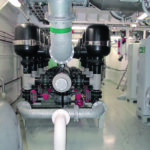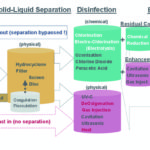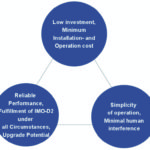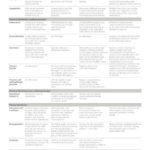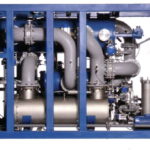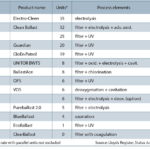The treatment of ballast water poses a lot of technical and financial questions for ship managers. An introduction and survey over current BWT systems and their specifications
Why treat ballast water?
The dimension of the challenge
For most cargo ships, but also passenger ships, ferries[ds_preview], supply and service vessels, ballast water is an indispensible facilitator for their operations, to tune the trim, to avoid excessive shear force load of the hull and to guarantee sufficient stability. It has replaced the time consuming loading of ballast rocks, which was the usual measure to keep empty ships upright in the sailing days. Ballast water enabled a much more flexible use of the ships’ double bottom as well as an easy load and discharge process. The respective ballast tank capacities range from a few hundred to several thousand cubic meters, with adequate pump capacities up to more than 2–3,000 m³/h. Ballast water is usually taken at the beginning of the voyage and discharged, completely or partly, thousands of miles away in the ports of destination, according to the actual load case. However, as every volume of water, ballast water contains living marine species of different kind, including their eggs and larvae, starting from some microns in size, which will often be dumped into a new environment and may behave invasive, ousting the domestic species and sometimes causing significant damage to local environment and economy.
With the growing world wide trade, of which more than 80 % is transported by ships, between 3 and 12 billion tonnes of ballast water per annum is shipped around the world, according to IMO’s estimation, by more than 60,000 relevant vessels, being mostly discharged in far away destinations. The invasive effects have become evident during the past decades, estimated to cause consequential damages in 3-digit billion dollar magnitude.
On this background the members of the International Maritime Organization (IMO) have adopted the »International Convention for the Control and Management of Ship’s Ballast Water and Sediments« (the »BW Convention«) in 2004, which has kicked off technology developments as well as new market expectations for suppliers of Ballast Water Treatment (BWT) systems. Since likely around 75 % of the world fleet will have to be outfitted with BWT (estimated approx. 57,000 ships) after the BW Convention will soon have passed the ratification threshold and thus be fully in force, consultants Frost & Sullivan predict a total market volume for BWT systems of more than 30 billion US$ until 2020, with annual growth rates exceeding 50 %. Consequently the number of BWT system suppliers has doubled to nearly 60 compared with autumn 2008.
However, the predicted turnover for the BWT suppliers is, on the other hand, investment for an additional ship‘s system, which the shipping community will have to shoulder in the coming years. Actual prices for a ship set range from 200,000–500,000 US$ in case of smaller BW pump capacities (around 200–300 m³/h) to 700,000 to nearly 3 million US$ for large plants with 2,000 m³/h and more. There are several different treatment processes on offer, which all have their specific impact on ship design respectively retrofitting needs, daily operation and cost as well as life cycle, while limited operational experiences are available to support today’s decisions, since only some 200 BWT systems are sold today, most of them installed quite recently or even not yet delivered. A further dimension of uncertainty for technical managers is the ongoing decision process in some regions (e. g. US Coast Guard and even some individual US federal states), whether the performance requirements (measured in surviving species) could finally be significantly stricter than stipulated in the IMO D2-standard. In this context it should be noted, that the performance measurement of BWT systems is not simple and straight forward at all and could thus potentially well lead to later disputes, if stricter standards than IMO would be required locally. The type approval of the different systems is a process, which can only be done by a limited number of authorized international institutions and which involves complex modelling assumptions (e. g. for converting measured peak discharge concentrations into average values, similar as in the impact analysis for anti-fouling coatings), for which obviously not all aspects are already common sense, as the ongoing lively discussion in the scientific community shows.
Consequence of the IMO BW Convention for shipping operators
In a nutshell, the IMO BW Convention stipulates for every ship > 400 GT, which has ballast water tanks, a Ballast Water Management Plan (BWMP), approved by the flag state in compliance with IMO resolution MEPC.127(53), as well as an on-board Ballast Water Record Book in IMO format. The convention also defines BW treatment standards which will be enforceable in the future:
»D1« is a temporary standard only for ships built before 2009 (definition: date of keel laying or date of major conversion), requiring 95 % BW exchange during the voyage 200 nm off shore and in a water depth of at least 200 m, for stability reasons this would not be easy for several container and RoRo ships. Alternatively D1 is requiring a pump through of at least three times the volume of each BW tank, which may need up to 500 nm sailing distance off shore and in deep water, depending on the vessel’s BW pump capacity and flow rate. Selection of D1 is possible until 2017 for ships with less than 1,500 m³ or more than 5,000 m³ ballast water capacity, for ships between 1,500 and 5,000 m³, as most container feeders, general cargo and passenger ships, only until 2015.
The ultimate standard »D2« requires the presence of an active BW treatment system, which is certified to kill organisms and thus to reduce the remaining species in the discharged BW below the values specified in the IMO-D2 standard, e.g. species > 50 m must be less than 10 per m³, plankton 10-50 m less than 10 per ml and certain bacteria less than 1 or 100 or 250 pc per 100 ml. In this context it should be noted that e.g. the US are inclined to implement standards with significantly lower figures for some species.
The consequence for shipping operators is rather clear: either to accept an additional ship system »BW treatment« which means additional complexity, investment and operating cost (which seems unavoidable for the majority of existing ships) or to look for radically new ship concepts which avoid the use of ballast water. In any case the ballast needs and concepts in present designs and operations are worth to be subject of an in-depth analysis with the goal to minimize BW use (which is at the same time also non-paying deadweight!). The changing shipping environment, e.g. the coming removal of the Panama Canal beam restrictions, will enable new possibilities in this field.
Who will have to implement BW management? And when?
The IMO BW Convention will enter into force 12 months after it is ratified by 30 countries representing 35 % of the world’s merchant shipping tonnage and the D1 or D2 standards can then be enforced internationally for all ships larger than 400 gt which have facilities and tanks for ballast water (with very few exemptions, e.g. national trades with special rules of the respective flag state, ships with permanent ballast water without discharge or navy ships).
By end July 2011 28 countries representing 25,43 % of the world merchant tonnage had enlisted in the IMO ratification table. Among these are the major open registers Antigua & Barbuda, Liberia and Marshall Islands as well as major flag states like Brazil, Canada, France, Korea, Norway, the Netherlands, Mexico, Spain and Sweden. Others, including the US, Greece and also Germany, are still missing.
However, most players expect the quorum to be reached by early 2012 latest, since the ratification of just one more open register state (e. g. Cyprus or Panama) would make the goal. Since IMO had already prolonged the ratification time line, it is not excluded that IMO would seek other ways to kick off the BW convention, in case the ratification process would really get stuck on the last meter.
Consequently the shipping community should face the challenge now and conduct preparations seriously and without delay. It is almost evident, that from January 1, 2012 onwards no new built ship will be launched without a BW management system meeting the IMO standard D2 (BW treatment) and that regular dockings from 2012 onwards should definitely be used for BWT system refits.
How to kill the unwanted invaders? A variety of processes is offered
The technologies offered for BW treatment are in general already proven in land based applications, such as municipal water supply or industrial waste water treatment. The decisive step to make use of those processes on board of ships is their adaption to the specific requirements of the shipping environment, in particular in view of fitting them on existing ships. The main constraints for on-board use are the available space (calling for a small installation footprint and modular installation possibilities), energy consumption (in line with existing gen sets), impact on existing ballast system (minimum pressure drop by process elements to work with the existing BW pumps), minimum need of extra tanks (e.g. for chemicals and additives), no complex controls, no restrictions or slow down of ballast operations, reliability and low maintenance need, no negative impact on tank coating life cycle (e.g. due to disinfection by-products) and, of course, minimum investment (treatment system and necessary modifications on board!) and operation cost.
Process steps
In general BW treatment is facilitated by two types of process steps: a physical solid-liquid separation and disinfection, by chemical reactions or physical effects, such as UV radiation, pressure pulses (cavitation), ultrasonic treatment or (inert) gas injection. Most offered systems, but not all of them, feature both process steps, some even combinations of different disinfection means for enhancement.
The physical separation is mainly done by filters (e. g. screen or disc filters) with mesh sizes of 10–50 m, in few processes hydro-cyclones are proposed instead, which, however, seem to have a higher energy consumption, larger back flush volumes and higher pressure drop compared to filters. The separated solid phase, containing the larger species in the filter back wash (or the cyclone down flow), is allowed be flushed over board in the ballasting area, but not in the de-ballasting area. That is why the separation step is usually bypassed in case the BW is treated also during the de-ballasting operation. Although filters are commonly used on-board technology and thus the characteristics regarding pressure drop, automation, reliability and maintenance needs are more familiar to the inspectors, special attention should be given to the selection of filter type, since under some condition of high biological load some filters (especially disc types) may be prone to clogging. An interruption free ballast operation must be guaranteed by the system makers.
The different disinfection paths, namely chemical treatment or physical destruction (e. g. by UV radiation, cavitation, ultrasonic treatment, heat or deoxygenation), do all have their stronger and weaker features. Some are more suitable for certain ambient and water conditions than other and vice versa. The main issues are as follows:
All processes in which chemicals are added (e.g. ozone or chlorines) normally require neutralization or a specific retention time before discharging the treated BW in order to meet the IMO-standard, which limits Total Residual Oxydants (TRO) to less than 0,2 mg/l in the effluent. This is because some compounds are generated (by-products) during the reaction, which are often stable or do have a half-lifetime of several hours. It is evident, that reliable real-time effluent analytics and additives dosing is a necessary key feature. Some makers are presenting long-term studies in order to prove, that such oxydant by-products would not lead to accelerated corrosion in BW tanks, others (e. g. OceanSaver) offer an optional process step to insert inert gas (e. g. nitrogen) to suppress tank corrosion. This consideration also applies for chemical processes triggered by electrolyse, which, by the way, require a certain salinity of the ballast water itself. Thus frequent ballasting operation in fresh or brackish water requires special considerations and possibly additives for chemical and electrolytic processes.
Physical destruction processes do not need extra tanks and chemical storages, handling of additives or residual control. Widely used in drinking water sterilisation is UV treatment. UV lamps are in general energy consuming. They have the highest germicidal efficacy when radiating wave lengths between 240–280 nm (UV-C). UV lamps with low internal pressure (LP) have a narrow wavelength spectrum (peak at 254 nm) but reduce energy consumption by 30–50 % and are longer, compared to medium pressure (MP) lamps, which provide a more polychromatic UV output for a better cover of the entire germicidal wavelength curve in the above-mentioned bandwidth. MP lamps are usually higher powered and more compact, which means that fewer lamps can do the same job with a smaller footprint. For UV lamps life cycles of 6.000 (MP) –10.000 (LP) hours are claimed. UV radiation treatment requires clear (good filtered) water or a high number of lamps in small distance, to avoid shadowing effects. For the treatment of poor water quality at high flow rates so far MP lamps are often considered to be the most effective choice. The quartz sleeves of the lamps are kept free of fouling by an automated wiping mechanism, which can be more compact for MP lamps.
Heat treatment plays a marginal role in today’s process proposals.
There are some processes which use shear forces generated by cavitation or ultrasonic pulses to destroy the organisms, mostly in the absence of a physical separation step or as further enhancement (add on) to chemical processes.
A special approach is the removal of dissolved oxygen (deoxygenation) from the ballast water by low oxygen inert gas injected in venture nozzles (NEI/VOS-process), which leads to asphyxiation of organisms and reduces the corrosion in the BW tanks due to the removal of oxygen, at the same time. This process is more suited for large ships (tankers) on longer voyages, since the disinfection effect will be reached only after at least four days of treatment.
A detailed consideration of the presently offered process steps can be read from the Table 1, which has been taken from Lloyd’s Register’s Ballast Water Treatment Technology Guide (http://www.lr.org/sectors/marine/Services/Consultancy/bwm/index.aspx). This guide contains also a regularly updated monitoring of makers as well as key data of their systems.
Energy consumption: a significant new factor in the ship’s electrical load balance
Filter + UV combinations, used in eleven BWT systems, have the highest power requirements. Although the use of low pressure UV lamps, as introduced by some makers, can reduce the power demand drastically, the power consumption is in the range of 50 (LP)-200 (MP) kW/1,000 m³/h for the filter plus UV solutions presently advertised. Electrochemical process are consuming in the same range. For filter plus chemical combinations lower power requirements in the range of 20–80 kW/1.000 m³/h are stated. The lowest values (even below 10 kW/1,000 m³/h) are found for systems, which are mainly based on de-oxygenation, chemicals and cavitation and don’t use filters. However, for those processes the costs for chemicals, additives or the fuel for an inert gas generator would have to be considered.
It is important to note, that above and beyond the above mentioned direct power demand by the BWT process itself, there will be also power demand created by the higher load of the BW pumps due to the pressure drop of the BWT system, which can be significant.
How must BWT system, ship and trade fit together?
As there is a large variety of different processes on offer, which all have their individual strong and weaker points and which may be of different importance depending on trade pattern and ship type and size, it is obvious, that a decent technical, operational and economical analysis should be mandatory before investment decisions would be drawn. Especially in case of retrofitting BWT systems on existing ships such in-depth analysis for the actual case is a must in order to avoid surprises and insufficient performance.
The starting point will be always size and characteristics of the ship and the trade(s) to be covered. Some operational considerations should answer the following questions:
• BW capacity, typical volumes for one load or discharge operation, pumping rates?
• Trade pattern, time between ballast operations, location of ballast operations?
• Frequently changing BW characteristics? (salinity, temperature, sediments, pollution, etc.)
• Time constraints for BW operations & BW treatment?
• Characteristics of existing BW system?
– central system or independent units?
– pump sizes and reserves?
– design pressures vs. pressure drop of the BWT system?
– sounding and control systems?
– corrosion protection system?
• Space constraints?
• Existing on-board energy supply (load balance) and systems (incl. automation, controls and alarms)?
• Need for explosion proof equipment (tankers, gas-carriers, gas fuel)?
• Ability to handle chemicals and understand complex analytics / controls? (Crew qualification, HSE)
• Other relevant requirements or constraints of the service?
Based on these considerations the BW treatment options, which are most appropriate for the case, can be short-listed. When comparing and benchmarking the different process (maker) options, the optimum will be found in the triangle marked by the corner stones
• low investment, minimum installation and operation cost,
• simplicity of operation, minimal necessity for human interference and
• reliable performance: fulfilment of the IMO standards under all circumstances in the trade pattern, ability to match even stricter standards (e.g. US) to be expected.
It must be highlighted again in context with the first corner stone, that eventually necessary modifications in the existing ship’s energy supply (DGs) and BW system (pumps, pipes, valves, controls) must be carefully evaluated and added to the investment.
The classification societies, engineering consultants and also repair yards are offering maker independent expert support for selecting the most suitable BWT system for the individual case. Lloyd Werft Bremerhaven for example has already implemented a special task force for this purpose.
Footprint and modularity
Almost all systems presently advertised on the market can be delivered either in form of compact, pre-assembled skid modules, typically up to 500 m³/h BW capacity, or in form of modules and even single components, to be mounted somewhere along an existing BW system, as the space would be available. The makers’ statements regarding the necessary footprint for their systems are more dependant on the plant’s capacity than the processes used. Typical skid footprints for plants with 500 m³/h capacity are e.g. 3,0 x 1,5 x 2,5 m or 4,5 x 2,0 x 0,5 m. For such a skid unit in this size a weight between 1,5–2,0 t must be expected.
There are also concepts for tankers, in which the entire treatment plant, e.g. with a capacity of up to 2,000 m³/h, could also be mounted in a 20’ container on the open main deck (approx. 8–10 t). There is a continuous optimisation going on among the makers in this young class of systems, as it is illustrated by e.g. the actual report of RWO »CleanBallast« about reduction of the footprint by approx. 50 %. Systems, which obtain a high capacity by multiplying smaller basis blocks for parallel use (e. g. the Wärtsilä / Trojan Marinex system), may require more space in large capacity installations. Depending on the process selected, eventually additional small tanks or storages for chemicals and additives would have to be considered.
Pressure drop: Are existing BW pumps still sufficient?
One of the most important considerations during the preparation for a new BWT plant is the hydraulic analysis of the BW system. According to the makers specifications the pressure drop caused by their systems ranges from below 0,5 up to 3,5 bar, where the higher end would be a challenge for existing pumps and valves. Certain process elements such as e. g. screen filters and hydro cyclones are known for relatively high losses, but also the hydraulic properties of the individual UV unit designs as well as nozzles, valves and pipes used should be considered, compared with the actual situation of the ship’s BW system (e.g. regarding reserves) and discussed in depth with the BWT makers. In worst case larger BW pumps, other modifications in the BW system or even a re-design for higher pressure level could become necessary. Pressure drop can be a key factor in the system comparison in case of retrofit projects.
Is there any »ideal« BWT system?
It goes without saying that most sales managers of the BWT makers would immediately raise their hands when being confronted with this question, and would support their view with a lot of good arguments. However, when considering all relevant decision factors, it becomes obvious, that there is no »royal road« being optimal for all different trades, sizes and types. As often in real life, a compromise within the above described decision triangle will have to be found, which should be the most advantageous choice for the individual case.
No doubt, that there are a lot of good arguments for the simple to operate and residual free UV solutions, in particular for smaller BW capacities and flow rates on ships with strong electrical power generation. On the other hand there are high quality and well automated chemical and electrochemical processes, which are strong alternatives, especially (but not only) for larger ships. The combination of BW disinfection and tank corrosion suppression by inert gas water deoxygenation has its own charm, most notably, if a separation step could be axed. In any case the system of choice should ideally have a certain »overkill capability« rather than just matching IMO-D2, in order to cope with eventual stricter local standards (e. g. US), which are still in discussion.
We have to acknowledge that we are in the beginning of product life cycles with few operational experiences available. Thus the shipping community is left with the decision mostly based on theoretical and prototype information. Future reports on lessons learned will provide more help.
Who are the actual main suppliers in the market?
Since the topic has been set on the agenda in 2004 and an upcoming market has been sensed triggered by the IMO BW Convention, a number of companies have developed BW treatment processes, many of them with US roots. Among them are technology driven start-ups, municipal water treatment specialists, major industrial players, yards and shipping companies. Today at least 56 makers are advertising more than 60 processes on the market. But until now just 28 processes have passed the first (»basic«) approval threshold and only 14 have finally received a flag state type approval yet (3 of them also for use in explosion zones), after successfully completing the multi-stage (and multi-year) approval exercise.
The suppliers, which today already have a final type approval certificate in compliance with IMO Guideline 8 (»G8«) are compiled in Table 2. Several more type approvals are announced for the coming months, they may partly also be delayed by bottleneck situations in the world wide limited number of qualified and authorized testing authorities.
Michael vom Baur





